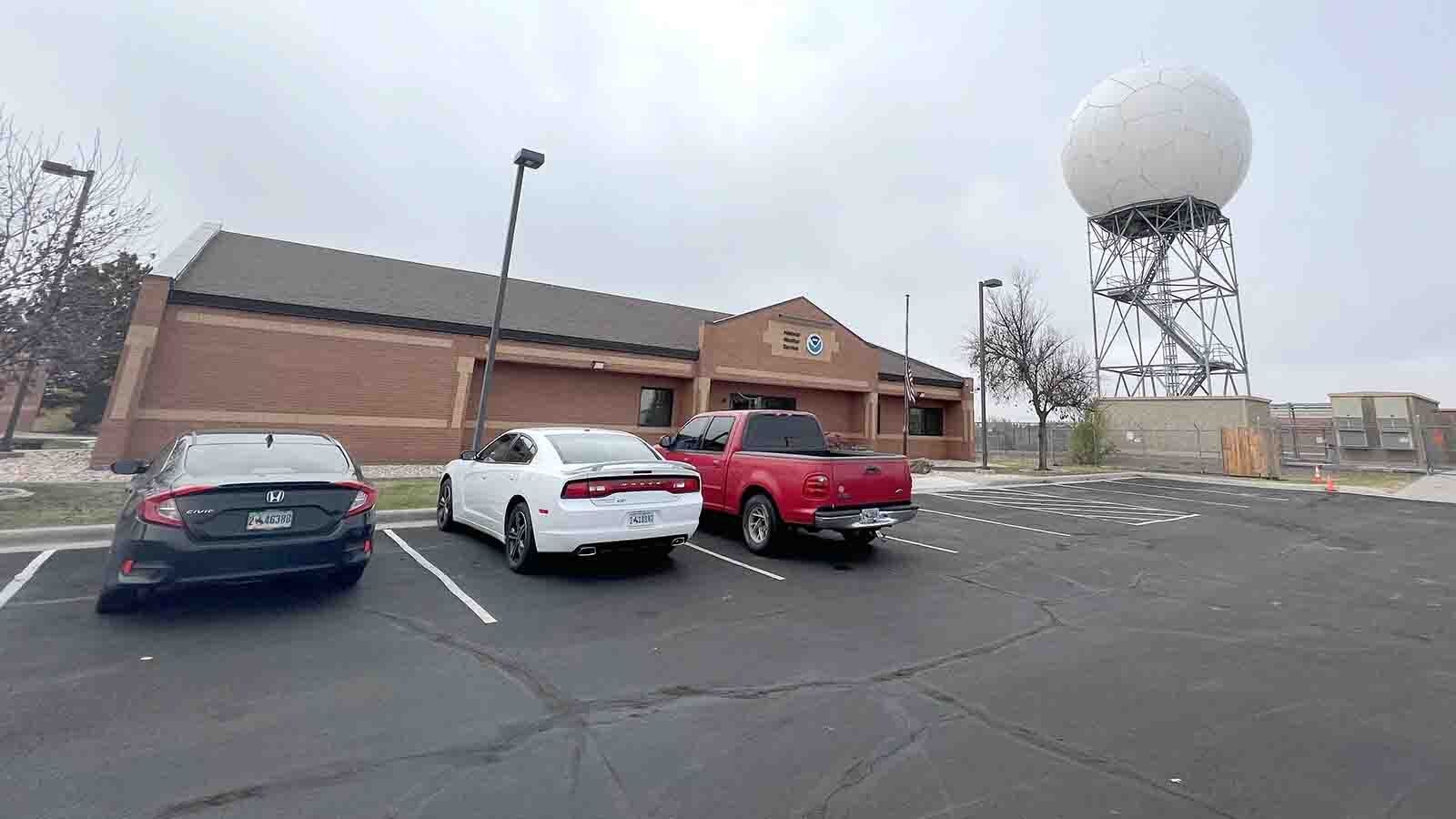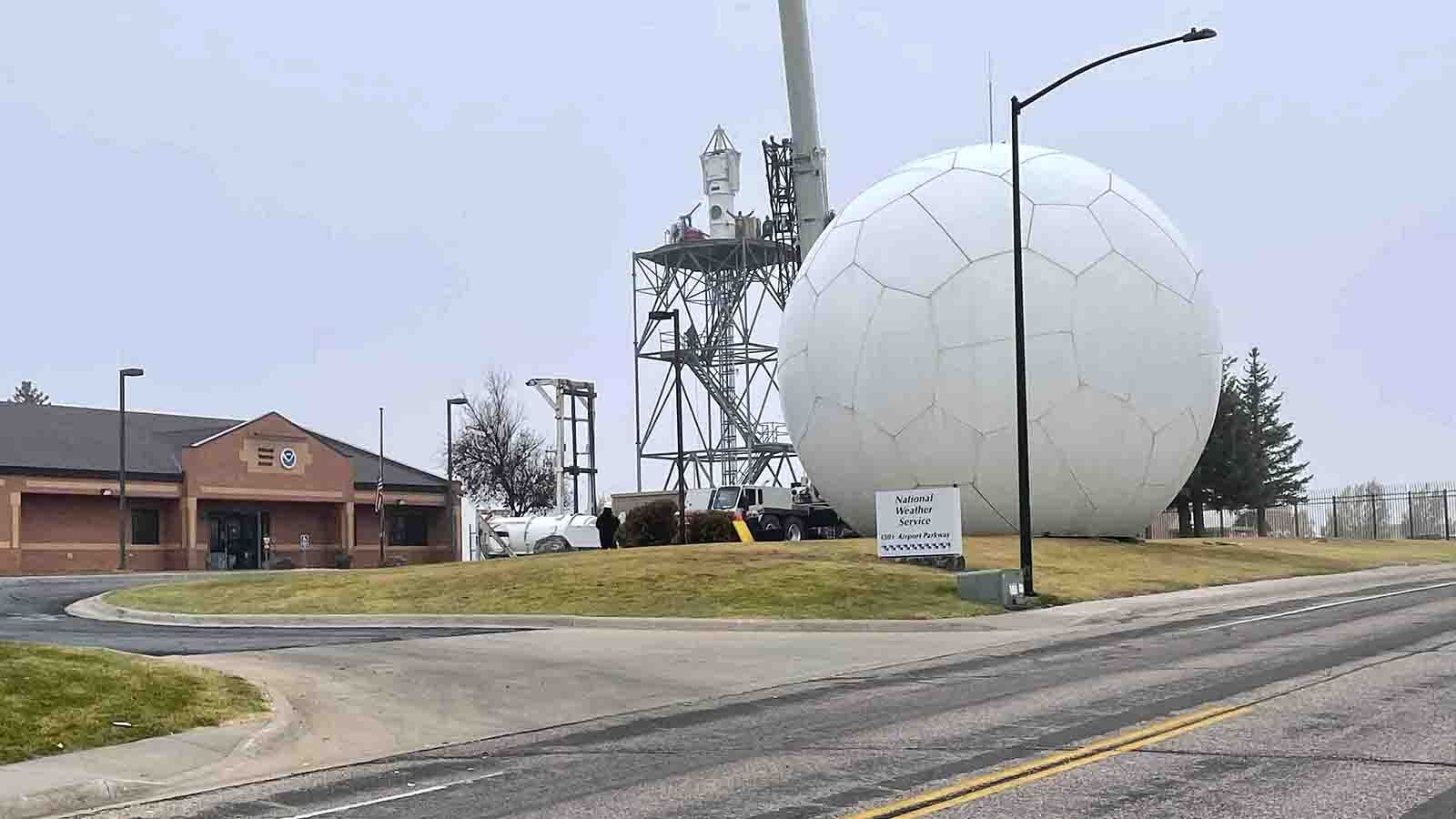The Doppler radar at the National Weather Service office in Cheyenne is getting its most significant technology upgrade in nearly 30 years.
The Doppler system at Cheyenne Regional Airport was taken offline this week to finish the final phase of its upgrade. Once finished, the program will ensure the weather radars in Cheynne and all NWS offices will continue providing accurate weather information for decades to come.
Some going to and from the airport may have noticed a major part of that installation Thursday when the Doppler, which is giant, white and round and resembles a humongous golf ball, was hoisted onto its elevated steel platform with a crane.
What Is Doppler?
The Doppler system gets its name from the Doppler effect, when the pitch of a sound changes as it moves through the air. For example, the sound of a siren or a train’s horn going lower once it passes by.
Jared Allen, the warning coordination meteorologist for NWS Cheyenne, said the electromagnetic spectrum works in a similar way. That’s the crucial technology that makes Doppler so valuable when it comes totracking and forecasting weather.
“Our Doppler radar sends out electromagnetic energy very briefly,” he told Cowboy State Daily. “Then, it listens like a bat for any information that comes back. Then it can tell if it hits any targets — rain, hail, snow — and if those are moving away from or toward the radar, and how big of a cross-section they have, how big a raindrop or a hail stone is.
“Then we can put together different tiered weather watches and warnings.”
Doppler systems are easy to spot because of their large, white fiberglass domes, which protect the delicate technology from the weather they find and analyze. Those domes usually sit atop large pedestals, which support the 30-foot radar dish and the other technology needed for a functioning system.
Putting It On The Pedestal
Allen said the Cheyenne Doppler was temporarily taken offline so itspedestal could be replaced. In addition to supporting the radar dish, the pedestal allows the dish to move in many directions as it gathers a four-dimensional picture of any incoming weather.
“(The pedestal) has been refurbished a few times, but this is the first time it has been completely switched out,” he said.
The original pedestal was installed when the Doppler system arrived at NWS Cheyenne in 1994 when many of the agency’s offices were modernizing. There have been internal upgrades in the 29 years since, but this year’s work is a complete refurbishment with the latest advances in meteorological technology.
The pedestal was successfully replaced Thursday, but there are still some components that have yet to be installed in the radar dish before the Doppler system is predicting Wyoming weather again. Allen anticipates the system will be back online before the end of next week.
For The Future
Allen said the upgrades will ensure the accuracy and longevity of the National Weather Service reports and analysis from Cheyenne for many years.
“This means excellent continued radar coverage and service,” he said. “It ensures the hardware components of the radar will continue well into the 2030s.”
In those years, Allen believes the next upgrade could include new technologies that will provide more precise meteorological analysis and better weather forecasts for all Wyomingites.
“The next viable radar in the 2040s could be this continued technology, or it could be this new phased array technology, which is already used in some places like the U.S. Department of Defense,” he said. “But that technology might migrate to the NWS in the next 20 years.”
Phased array radar is a computer-controlled collection of antennas that creates a beam of radio waves that can be electronically steered to point in different directions without moving the antennas. The Department of Defense developed it to detect ballistic missiles, but the National Oceanic and Atmospheric Administration has been experimenting with phased array radar for weather prediction for many years.
If implemented, phase array radar could lead to better analysis and understanding of thunderstorms, earlier predictions and warnings of the weather patterns that lead to destructive tornadoes and “instant weather predictions,” he said.
But that’s the technology of tomorrow. Today, Wyoming residents can feel secure in the data and information being gathered by the giant high-tech golf ball near the Cheyenne airport.
Allen encourages everyone to visit online to see the new NWS Cheyenne Doppler radar in action when it’s operational. With the first winter storm in the season already hitting Wyoming hard this week, using the NWS Cheyenne website and any number of third-party weather apps can keep everyone safe and informed.

Andrew Rossi can be reached at arossi@cowboystatedaily.com.





